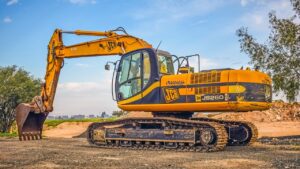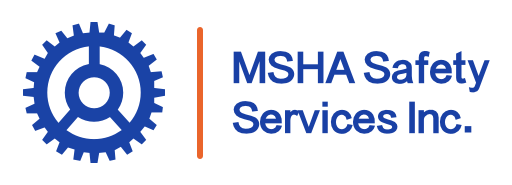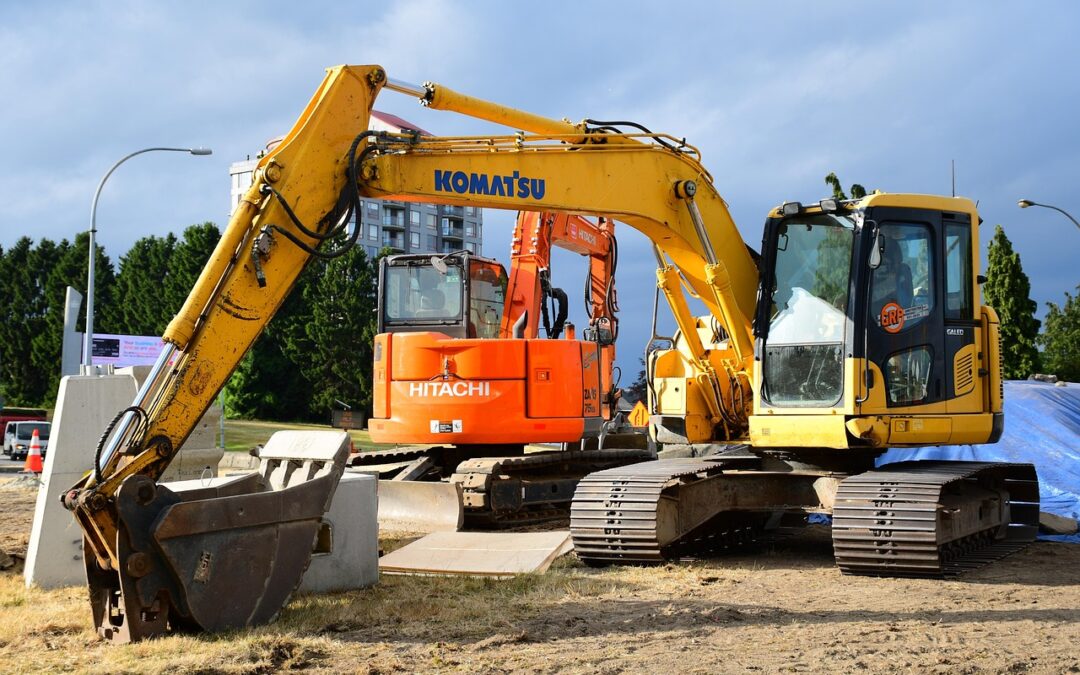In mining, some of the most serious—and often entirely preventable—accidents happen when heavy equipment isn’t properly blocked or secured. Whether it’s a dozer rolling unexpectedly or machinery shifting while maintenance is underway, the consequences can be fatal. Blocking and securing equipment isn’t just a best practice; it’s a crucial life-saving step.
This article explores why these procedures are essential, how they differ from lockout/tagout processes, and what tools, training, and techniques are necessary to get it right. We’ll also discuss how towing safety and risk management fit into the bigger picture of keeping miners safe every day.
Why Blocking and Securing Equipment Matters in Mining
Mining operations rely on powerful machines and heavy equipment that, if left unsecured, pose huge risks. Even a small jolt, vibration, or shift can cause equipment to move or collapse unexpectedly, putting workers in serious danger. Proper blocking ensures that heavy machinery—whether it’s a haul truck undergoing repairs or a conveyor system being serviced—remains stable and immobile during work. This goes far beyond regulatory compliance; it’s about protecting lives on the ground.
Common Equipment Hazards That Lead to Fatalities on Mine Sites
The dangers linked to unblocked or unsecured equipment are numerous and severe. Equipment can roll or tip unexpectedly, especially on uneven ground, and unintended movements during repair work can trap or crush workers. Hydraulic or mechanical failures may cause sudden drops or shifts, and gravity-induced collapses can happen when equipment isn’t properly supported. Tragically, many fatalities occur in these situations because the hazards go unrecognized or procedures are skipped. Understanding these risks is the first step toward preventing accidents.
Lockout/Tagout vs. Blocking: What’s the Difference in Mining?
Lockout/Tagout (LOTO) and blocking are both fundamental safety measures but serve different purposes. LOTO focuses on isolating and controlling energy sources—like electrical or hydraulic power—to prevent machines from starting unexpectedly. Blocking, on the other hand, physically prevents movement by stabilizing or supporting equipment components. Think of LOTO as cutting off the machine’s power, while blocking keeps the machine or its parts physically in place. Both must be used together in mining to create a safe working environment.
Proper Blocking Techniques for Heavy Mining Equipment
To block heavy mining equipment correctly, you first need to ensure all energy sources are shut off and locked out. Using stable, non-compressible materials such as steel or heavy-duty plastic blocks is essential—wood that can splinter or crush is never safe. Blocks should be placed strategically under raised components like loader arms, dump bodies, or buckets, and the setup must be double-checked for stability before anyone works underneath. Good blocking holds the load steady even if the ground shifts slightly or vibrations occur.
How to Secure Equipment Before Maintenance or Repair
Before beginning maintenance or repairs, the equipment must be properly secured. This starts by parking the machine on level ground and engaging the parking brake. Wheels should be chocked to prevent rolling, and all suspended parts should be lowered if possible. Once the equipment is physically supported with jack stands or cribbing, lockout/tagout procedures should be applied to disable energy sources. Never rely solely on hydraulic systems or tires to hold a load, as these can fail without warning. Physical blocking is the only reliable way to ensure the equipment remains safe to work on.
Essential Tools and Materials for Safe Blocking in Mining Operations
Using the right tools and materials makes all the difference. Steel or heavy-duty plastic cribbing blocks, wheel chocks, jack stands, lockout/tagout kits, and safety pins provide the strength and reliability needed to secure equipment properly. Makeshift solutions like rocks, scrap wood, or unstable materials should never be used, as they increase the risk of failure and accidents.
Pre-Task Safety Checklists for Blocking and Securing Machinery
A quick but thorough pre-task safety check is important before blocking and securing equipment. This means confirming that the machine is powered down and locked out, the parking brake is engaged, wheels are chocked, and the correct blocking materials are in place and properly positioned. The load should be tested for stability, and all workers must be informed about the blocking setup. Taking just a few minutes to follow this routine can prevent disasters.
Preventing Accidents with Proper Rigging
Often, rigging is used to lift or move equipment before blocking. If done improperly, rigging can lead to load shifts, dropped machinery, or serious injuries. Safe rigging involves selecting the right slings and anchor points, ensuring the weight limits are respected, maintaining clear communication among the crew, and using tag lines to control suspended loads. The importance of blocking and securing extends through this phase as well, reinforcing safety throughout the entire operation.
Managing the Risks of Towing Equipment in Mining Operations
Towing equipment adds another layer of risk. The potential for rollovers, tow-bar failure, or sudden stops increases dramatically when heavy loads are involved. Safe towing requires verifying the weight and towing capacity of equipment, using safety chains and flags, blocking and securing the load before connecting it, and monitoring speed and terrain conditions carefully. Towing equipment that hasn’t been properly blocked or secured is a recipe for disaster.
Training Workers to Recognize Unsecured Equipment Hazards
Training is key to ensuring everyone on site can recognize when equipment is properly blocked—or dangerously unsecured. Workers need to understand how to identify unstable or unsupported loads, how to apply and inspect blocks and chocks correctly, and the importance of reporting and fixing unsafe setups immediately. Regular hands-on training sessions, refresher courses, and toolbox talks help reinforce these safety habits.

Regulatory Requirements for Equipment Blocking in the Mining Industry
The Mine Safety and Health Administration (MSHA) has clear regulations mandating that mobile and stationary equipment be blocked to prevent hazardous movement during maintenance or repair. These requirements are laid out in specific parts of the Code of Federal Regulations, including 30 CFR Part 56/57 for surface metal and nonmetal mines, and 30 CFR Part 75/77 for underground and surface coal mines. Failing to comply with these rules can lead to citations, fines, and more importantly, tragic accidents. Following regulations is both a legal responsibility and a moral imperative.
Saving Lives Through Proper Blocking and Securing Practices
Ultimately, blocking and securing equipment is about one thing—saving lives. No job is worth risking a fatality, and every death caused by unsecured machinery is preventable. By understanding the importance of these safety measures, using the right tools, following thorough checklists, and staying fully compliant with regulations, mining operations can create safer workplaces. Protecting workers through proper blocking and securing is a pillar of responsible mining safety.

